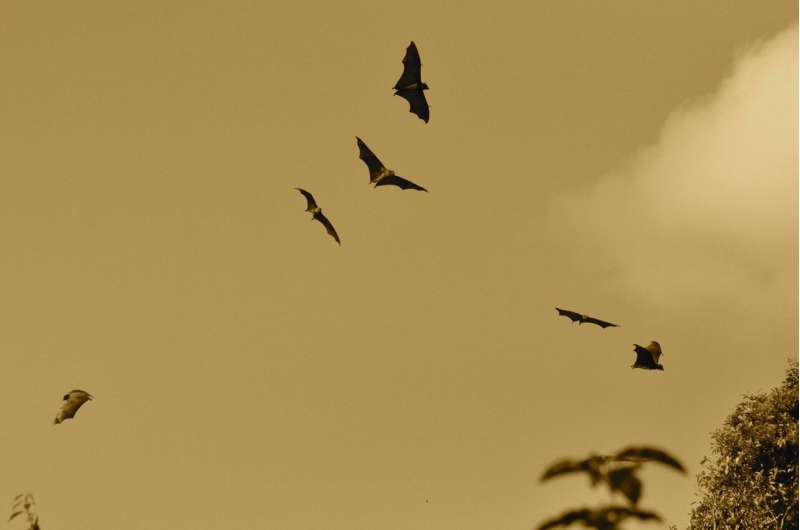This article has been reviewed according to Science X's editorial process and policies. Editors have highlighted the following attributes while ensuring the content's credibility:
fact-checked
trusted source
proofread
Light pollution found to have far-reaching effects on some North American bats

Light pollution, or artificial light at night (ALAN), is a rapidly growing threat to nocturnal wildlife around the world, particularly for bats. However, little is known about the distances up to which lights can displace foraging bats from their habitat. Is it just a few meters or could the reach be much greater?
The answer to this question has profound implications for the cumulative footprint of disturbance caused by ALAN on the present-day landscape as well as the ability of regulators to effectively safeguard important bat habitat from light pollution generated by future development.
A new study published in Global Ecology and Conservation shows just how far two light-averse North American bat species will go to avoid ALAN.
Researchers from the Great Hollow Nature Preserve & Ecological Research Center (New Fairfield, Connecticut, U.S.) and Bat Conservation International (Houston, Texas, U.S.) conducted an experiment in which they artificially illuminated bat foraging habitat in Connecticut with residential LED floodlights and measured the activity of light-averse little brown bats (Myotis lucifugus) and big brown bats (Eptesicus fuscus) with acoustic recorders placed at 25-meter intervals away from the lights.
Illuminance was 24 lux right under the lights and then sharply faded to only 2 lux 25 meters away, 1 lux 50 meters away, and < 1 lux 75 meters away.
Despite minimal illuminance at the farther distances, the researchers detected little brown bats on significantly fewer nights when the lights were on versus off, even at 75 meters. Little brown bat foraging activity was also significantly reduced by the lighting at 75 meters, where it averaged only 43% of dark-night activity. Big brown bats were less affected, with no difference in presence/absence at any distance and a significant reduction in foraging activity only up to 25 meters away.
Effects of the lighting on little brown bats and big brown bats, but not the other bat species in the community, resulted in a significant change in community composition up to 50 meters away.
"What this tells us is that even small-scale, residential lighting can have far-reaching displacement effects on light-averse North American bats and drive shifts in overall community composition that extend well beyond the primary area of illumination," said lead author of the study, Chad Seewagen.
"Habitat degradation for the imperiled little brown bat and the big brown bat caused by the spread of light pollution into dark landscapes could therefore be substantial. Our results suggest white LED lighting should be shielded or distanced from foraging habitats and movement corridors enough to limit spill to 0 lux since even dim artificial light is enough to displace these bats," Seewagen continued.
The authors hope this information will help land-use planners and natural resources regulators better evaluate potential impacts to these species from ALAN and more effectively buffer important habitats from light encroachment.
More information: Chad L. Seewagen et al, Far-reaching displacement effects of artificial light at night in a North American bat community, Global Ecology and Conservation (2023). DOI: 10.1016/j.gecco.2023.e02729





















